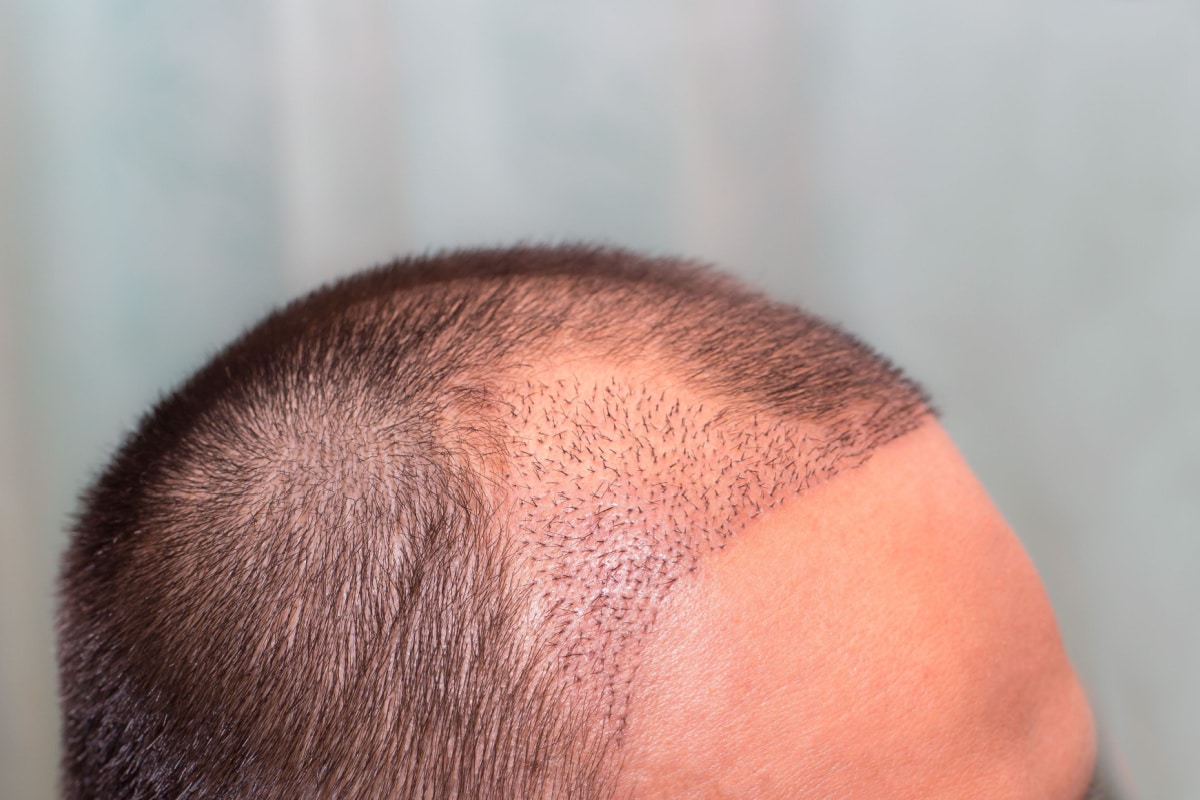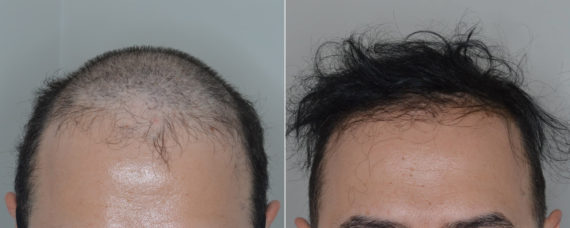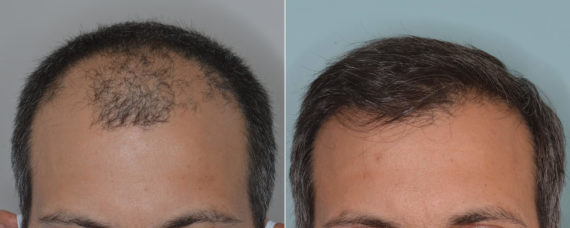Embarking on a hair restoration journey involves understanding the natural growth cycle and the intricate recovery process that follows a hair transplant. This guide will walk you through the month-by-month stages of hair regrowth, highlighting the critical role of donor hair follicles in the overall growth of hair.
As you progress through the hair growth process, it’s essential to keep in mind the unique dynamics of your hair situation. Each step, from the initial transplantation to the eventual emergence of new hair, is a testament to the remarkable capabilities of modern hair restoration techniques.
Immediate Post-Transplant Care and Healing
Day-by-Day Post-Operative Care
In the days post the hair transplant operation, it’s crucial to follow an aftercare regime prescribed by Dr. Bared. This period is critical for the survival and healthy growth of the transplanted hairs. Immediate care often includes:
- Gentle Cleansing: To prevent infection and aid healing.
- Medication: Prescribed to manage pain and reduce the risk of infection.
- Activity Restrictions: Avoid strenuous activities to prevent dislodging of hair grafts.
Managing Discomfort and Swelling
Discomfort and swelling are common in the initial days post-surgery. Here are ways to manage them:
- Cool Compresses: Applied to reduce swelling.
- Elevation: Keeping the head elevated can minimize swelling.
- Pain Management: Following Dr. Bared’s guidance on pain relief is essential.
The First Month: Healing and Potential Shedding
Normal Healing Milestones
The first month of the hair transplant recovery timeline is pivotal for the natural hair growth cycle to commence. During this period, patients may notice:
- Scab Formation: Around the transplanted hair follicles, which is a normal part of the healing process.
- Initial Shedding: Transplanted hairs may shed, making way for new growth.
Understanding Shedding Phase
Shedding of hair strands after a hair transplant is not a cause for concern. It’s part of the normal hair growth cycle where the hair shaft is released, preparing the hair follicles for the next growth phase.
Monitoring Progress: Growth Phases of Transplanted Hair
Anagen Phase: New Growth Begins
The anagen phase marks the start of hair growth stages. This is when:
- Active Growth: Transplanted hair follicles begin producing new hair strands.
- Visible Changes: Initial hair growth becomes noticeable, though it may be uneven at first.
Catagen Phase: Transition Stage
In the catagen phase, hair growth slows, and follicles prepare to enter the next stage. This transition is a normal part of the hair cycle.
Hair Transplantation Outcomes
Before & After Photos
Each patient is unique and individual results may vary*.
Three to Six Months Post-Transplant: Initial Signs of New Hair Growth
During months three to six post-transplant, patients start to see the first signs of hair transplant growth. This period is often marked by:
- Noticeable Hair Growth: New hair starts to become visible.
- Texture Changes: Newly grown hair may initially have a different texture.
Six to Nine Months: Increased Density and Coverage
By the 9th month, the rate of hair growth increases, and patients often observe:
- Denser Hair: Hair density improves, offering better scalp coverage.
- Maturing Hair Style: The texture and color of new hairs start to blend with native hair.
One Year After: Assessing the Final Results
Comparing Before and After
A year into the hair transplant recovery timeline, it’s time to evaluate the long-lasting results. This is when patients can truly compare their new head of hair to their pre-transplant condition. Photographic evidence often highlights the dramatic transformation.
Evaluating Hair Transplant Success
Success post a hair transplant procedure is measured by:
- Fullness of Hair: Assessing the overall density and coverage.
- Hair Quality: Evaluating the texture and health of the transplanted hairs.
- Patient Satisfaction: The ultimate indicator of success is the patient’s happiness with the outcome.
The Role of Lifestyle in Enhancing Hair Transplant Results
Nutritional Factors for Optimal Hair Growth
Post-transplant hair growth can be positively influenced by lifestyle choices, particularly nutrition. A balanced diet rich in vitamins and minerals supports the healthy growth of both transplanted and native hair.
Ongoing Care and Maintenance of Transplanted Hair
Long-term care is essential for maintaining the health and appearance of a hair transplant. Regular consultations with hair transplant specialists like Dr. Bared can guide patients on how to preserve their results. This includes advice on hair care products and practices.
Addressing Concerns: Touch-Ups and Additional Treatments
Sometimes, additional treatment may be needed to achieve desired hair density or to address minimal hair loss in other areas. Dr. Bared can advise on the availability of donor hair for touch-ups or other hair restoration procedures.
Self-Image and Confidence Post-Hair Transplant
Undergoing a hair transplant can significantly impact a person’s self-image and confidence. The transformation from pattern baldness to a fuller head of hair often enhances a person’s outlook and social interactions.
Dr. Bared’s expertise in hair transplant surgeries ensures patients are guided through every step of their journey, from the initial medical consultation to the critical period of the hair growth cycle. The aim of hair transplantation is not just to restore hair but to bring back confidence and quality of life. Schedule a consultation with Dr. Bared today.
Following Dr. Bared’s hair transplant timelines and aftercare for hair growth can lead to beautiful hair and satisfying results. Remember, the journey to regaining a full head of hair requires patience, adherence to aftercare regimes, and a commitment to healthy living for the best possible outcomes.



